
Business improvement doesn’t need to be mystical. Beneath the constant transformation programmes and change-jargon are two simple forces: friction and reward. Reduce the former, strengthen the latter, and people — and customers — move faster, are happier and are more productive.
Earlier in my career I was already thinking of this concept but I called it Resistance & Outcomes. More recently I’ve borrowed the sharper label of Friction & Reward, from Richard Hammond (not the Top Gear presenter) — founder of Uncrowd — and his book Friction vs Reward. (affiliate link).
Hammond’s retail-rooted framework and ideas, Friction and Reward, is brilliant because it gives us a simple way to map what actually makes people act.
I dive deeper into this topic in the podcast, or read on for insights and actionable activities. My own learning notes are at the end of this post.
What Hammond gives us: a simple model that can work everywhere
Richard’s core insight of Friction & Reward can be mapped into a quadrant, something I use a lot with clients and teams: friction (low→high) on one axis, reward (low→high) on the other.
Richard's book is about retail and customers, but it can also be applied internally to the business.
Everything you do in a business — recruiting, serving customers, shipping software, answering calls — can be plotted on that chart.
Three choices will change outcomes:
- Reduce friction (make it easier to do things).
- Increase reward (make the payoff worth the effort).
- Do both.

Bringing this concept to life in the retail space: Amazon is the textbook example: low friction to buy, good reward (fast delivery for Prime members). A low-cost supermarket with massive queues is the opposite: high friction, but the reward (very low prices) makes it worth it. And there are many businesses stuck in the worst place — high friction and low reward — where customers and staff simply walk away.
Hammond’s model isn’t just for retail. I’ve used it for recruitment, customer support and product delivery. The same quadrant helps you decide whether to invest in faster systems, richer perks, or both.
Friction: what it really is
Friction is anything that slows people down or makes good work harder:
- clumsy processes and sign-offs
- broken technology and long queues
- needless reports and micromanagement
- politics that hide the truth
Some friction is deliberate and useful. Hammond’s point: not all friction is bad. If the reward on the other side is huge, customers will tolerate friction.
Reduce friction blindly and you can erode the reward – for example, raise prices to pay for extra checkout staff to reduce the friction of queues, and lose your value proposition and reward (low prices).
So the question isn’t “how do we remove all friction?” but “which friction is hurting us, and how will changing it affect reward?”
Reward: what really motivates people
Reward isn’t just pay. Hammond’s retail thinking aligns with decades of psychology: once basic needs are met, intrinsic rewards matter most.
In work, think Daniel Pink: autonomy, mastery, purpose. Add recognition, fairness and visible progress, and you have the kinds of rewards that make people stay and perform.
Rewards sit in three places when I map this model to our workplaces:
- Customers: fast resolution, great onboarding, product value.
- Staff: meaningful work, career progress, autonomy, belonging.
- Business: better results, retention, reputation, easier hiring.
When reward is genuine, people tolerate some friction. When it isn’t, even small frictions become unbearable.
Need states and modifiers — why context matters
One of Richard's extremely useful concepts is need states (what someone is trying to do) and modifiers (factors that change that need). They’re like the “jobs to be done” framework but with more nuance.
Example: shopping for summer clothes (need state). Add a screaming toddler (modifier). The same purchase now requires speed, simplicity and fewer decisions.
Likewise, a customer phoning support because their business is losing money has a different need state than someone with a minor billing question. The urgency, context and modifier change how much friction is acceptable.
When you map problems, capture need states and modifiers. It stops you solving the wrong problem for the wrong person.
The quadrant in action — three real examples
- Recruitment — from 2–3 months to two weeks
We were growing fast and taking ages to hire. The process was painful for candidates and hiring managers — high friction, middling reward. By stapling ourselves to the process, mapping every step and removing blockers, we cut time-to-hire dramatically. That moved the process to the low-friction, high-reward quadrant. Candidates were engaged, managers were happier, and retention improved. Well, it wasn't high reward to start with, so we bolstered our culture to make it an awesome place to work. - Software delivery — from 18 months to weekly releases
Shipping infrequently left us outpaced. The friction in deployment and testing meant reward was delayed and often irrelevant. We invested in automation, clearer requirements and smaller releases. The result: lower friction, quicker feedback, higher reward for customers. - Customer support — from 25 stages to first-call resolution
I was consulting with a company that had a terrible customer support and care reputation. It turned out the support process had a whopping 25 stages. This was the result of managers looking for people to blame - the effect was a friction loaded system with minimal rewards for customers. The team were also gaming the system by moving customer cases around to avoid being blamed. We stapled ourselves to the process, simplified the flow, enabled first-call resolution and removed the silly reporting culture. Employees felt empowered and customer satisfaction soared. Friction fell and reward went up for customers (and staff).
Don’t forget the maths — and the trade-offs
Hammond writes about the maths of friction and reward — the cost of reducing friction versus the value of the added reward. I’m no mathematician, but the principle matters: there’s always a trade-off. Hiring more people reduces queue time but raises costs and may lower the price advantage. Investing in slick tech might be expensive without clear customer benefit.
So always test changes and measure outcomes. Use data to see whether reducing friction genuinely increases the right rewards.
How to apply this right now
- Map the friction
Run a simple session: collect everything that slows people down. Don’t filter. You’ll hear the same themes. - Plot on Hammond’s quadrant
Where is each problem: high friction/low reward, high friction/high reward, low/low, low/high? This helps prioritise. - Check need states & modifiers
Whose problem is this? What changes the need? Solve for context, not for the idealised persona. - Pick one lever
Decrease friction, increase reward, or both. - Test and measure
Implement changes quickly and check whether more customers or more staff are happier. Hammond’s question — “Will this change make fewer or more customers/staff happier?” — is a great litmus test. - Protect the gains
Reward is fragile. Keep communicating progress, celebrate wins, and keep asking whether the fix created new hidden frictions or reduced rewards.
Why leaders must care
Leaders create many of these frictions — often unintentionally. They also have the power to remove them. Hammond’s model is a practical way to see where leadership time is best spent: clearing the path so people can do the work that matters.
And there’s another angle: choice and control. Today customers and employees can switch suppliers or jobs more easily than ever. If your organisation piles on friction and fails to reward people properly, they will exercise that choice.
Closing thought
Friction vs Reward isn’t just retail theory. It’s a practical lens for every organisation. Map your frictions. Understand your rewards. Test changes. And always consider the context: need states and modifiers will tell you when friction is tolerable — and when it’s making things worse.
If you want one thing to do today: ask your team, “What’s one friction you’d remove tomorrow that would make your work better?”
Pick that, fix it, and measure the change. Small moves in the right quadrant compound into huge improvements.
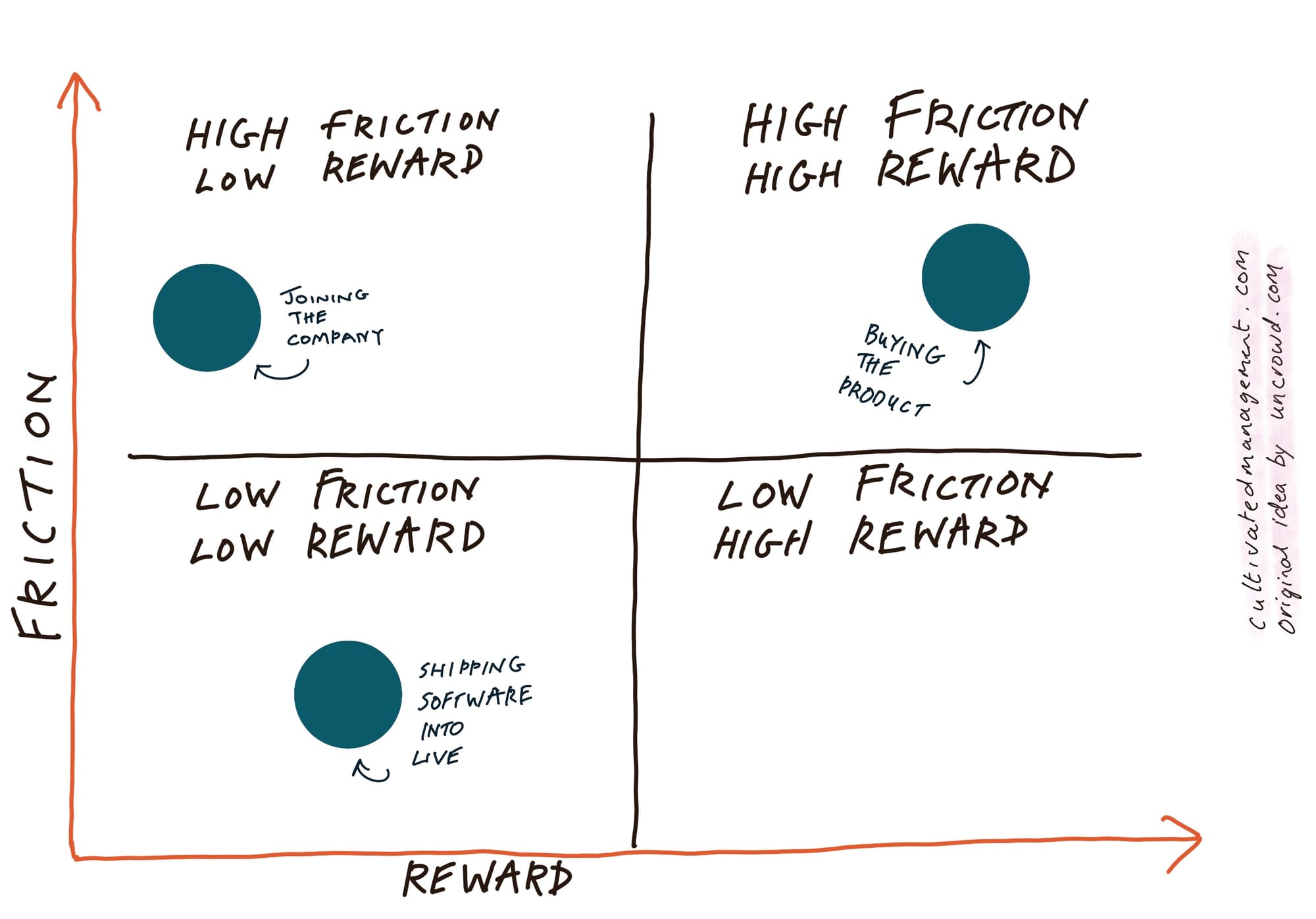
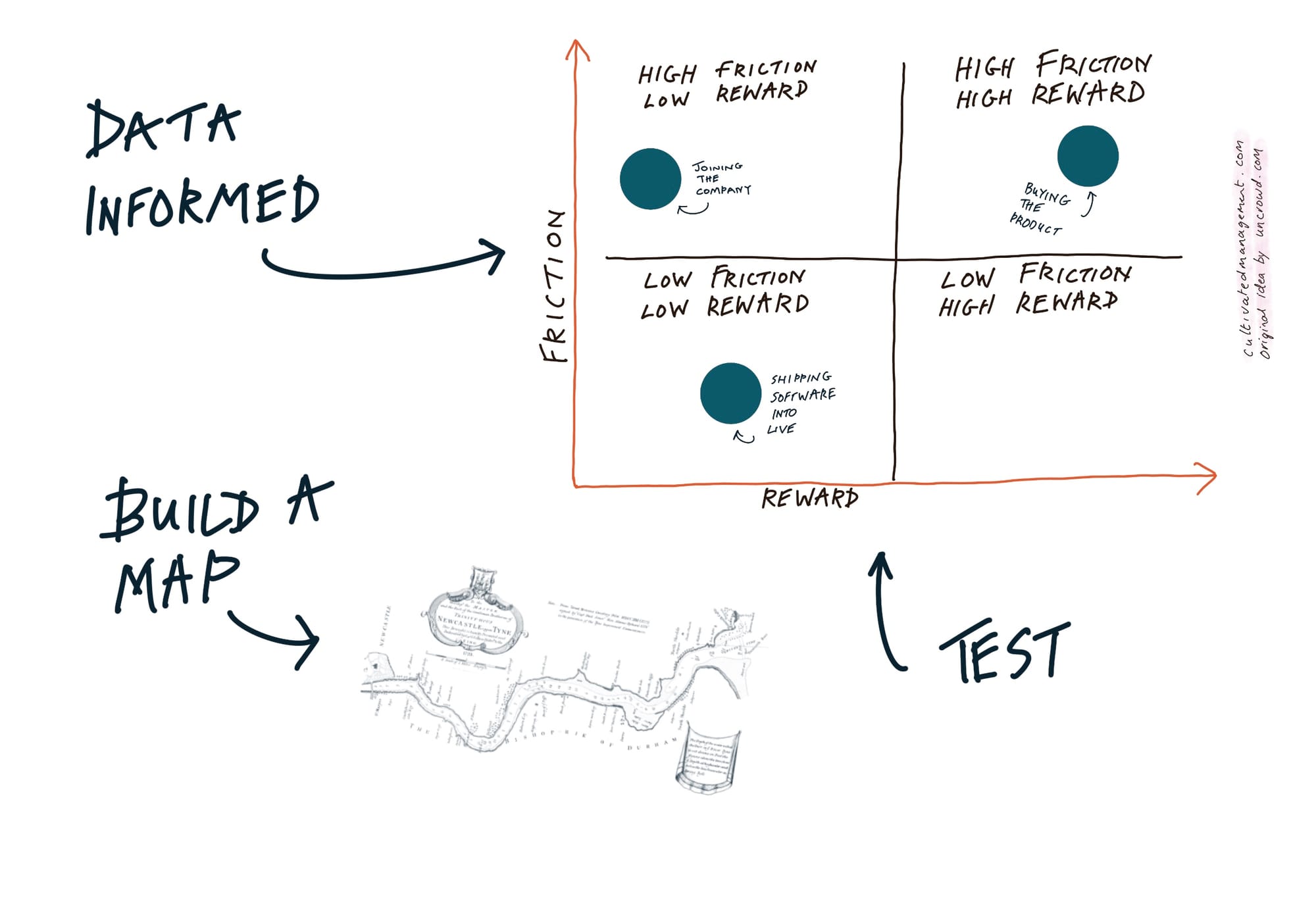
Learning Notes
These are my "learning notes" - real notes I create for my own learning. I create them for my own growth and only share notes I feel would be relevant to the community.
I use my trusty 4 step Personal Knowledge Management System of capture, curate, crunch and contribute. What you see here is part of step 4 - contribution.

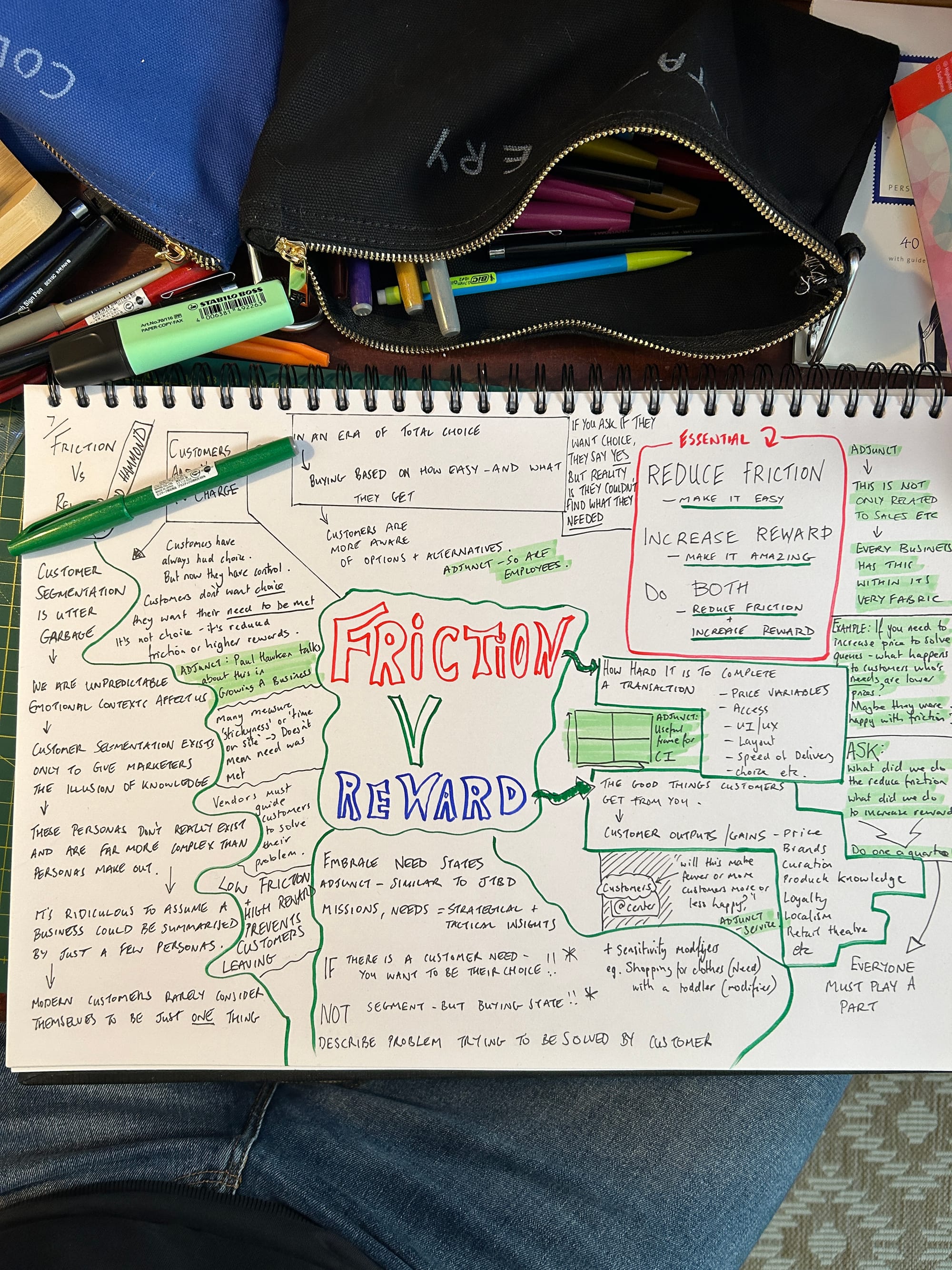

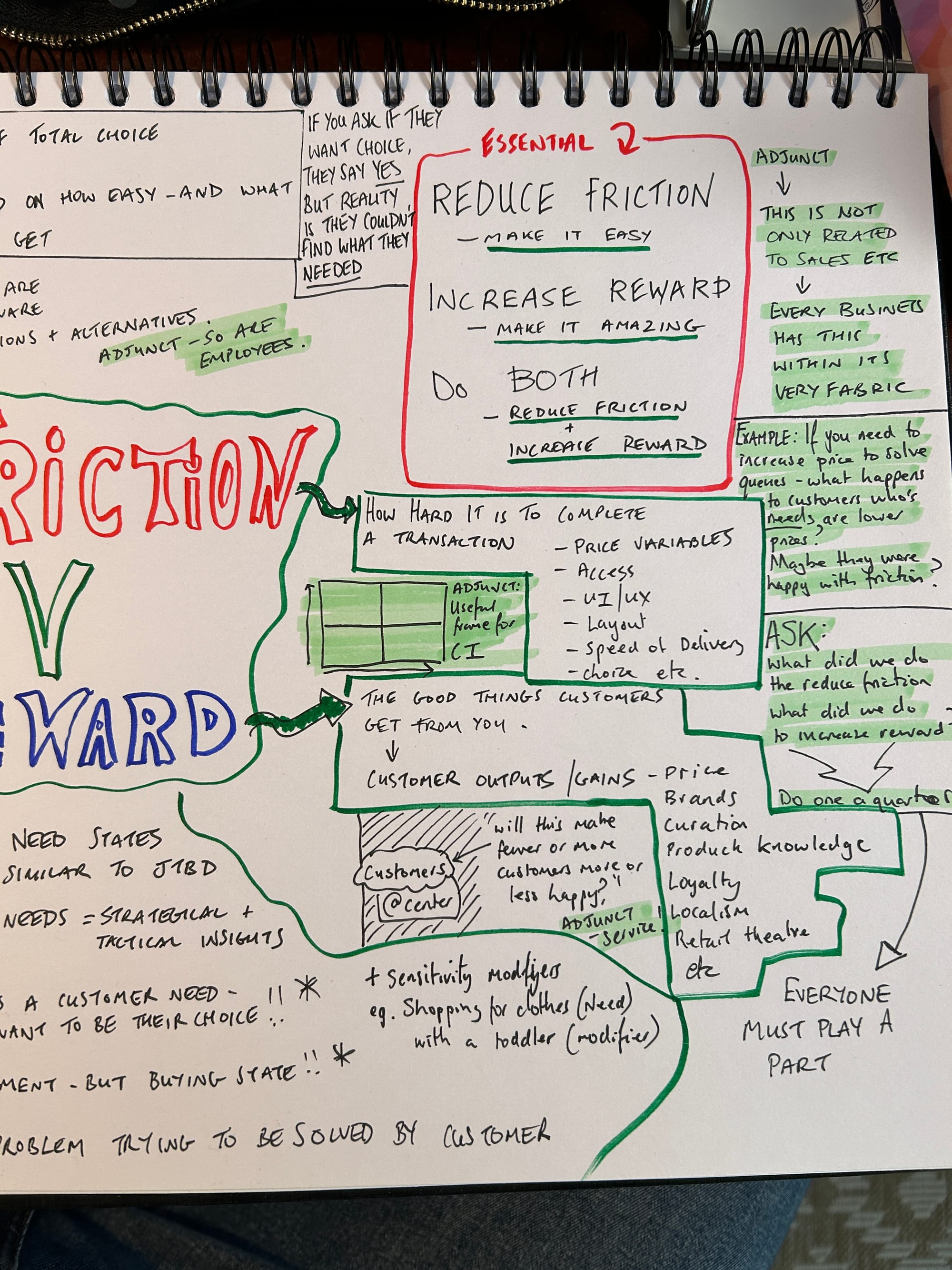
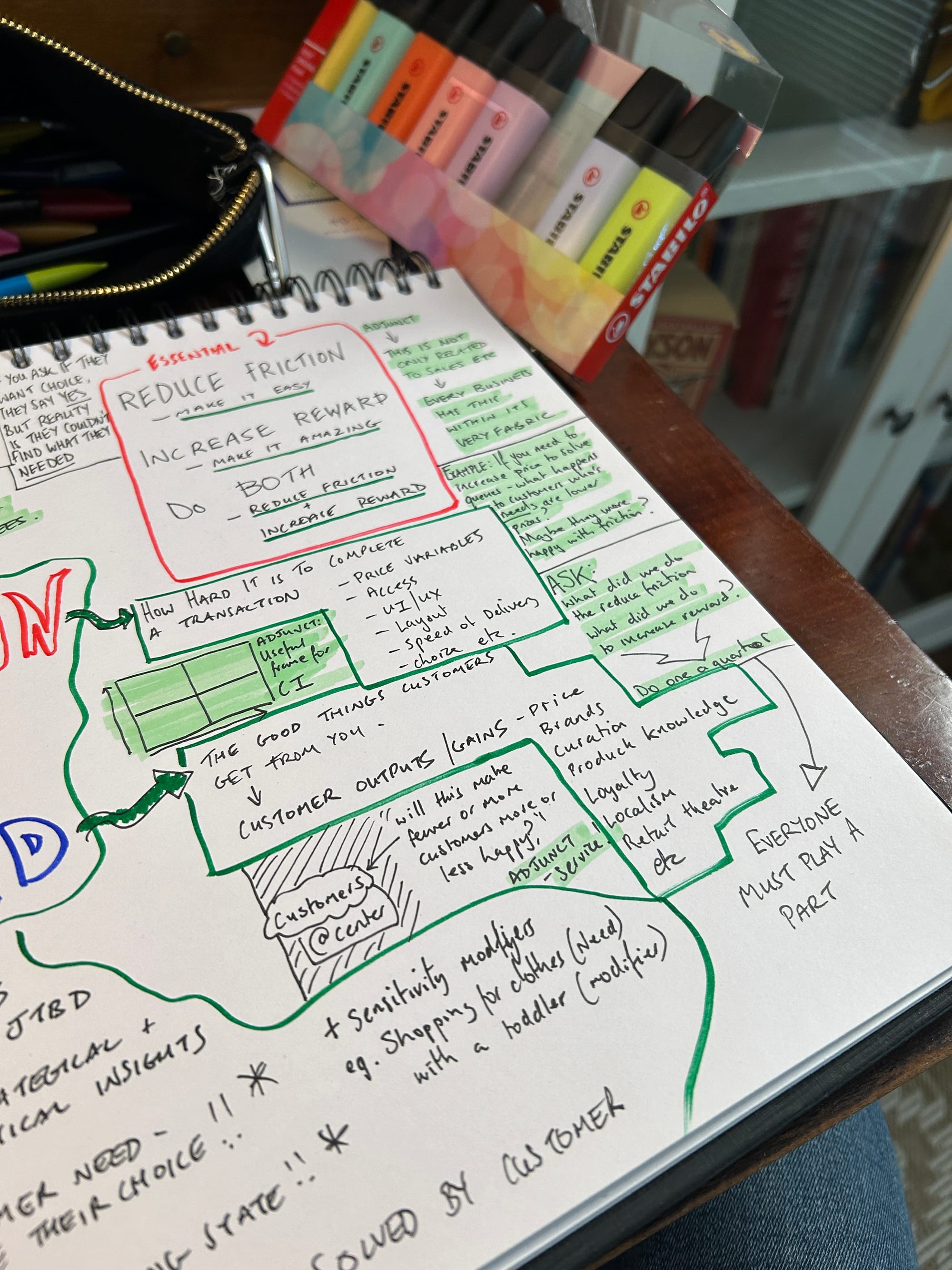
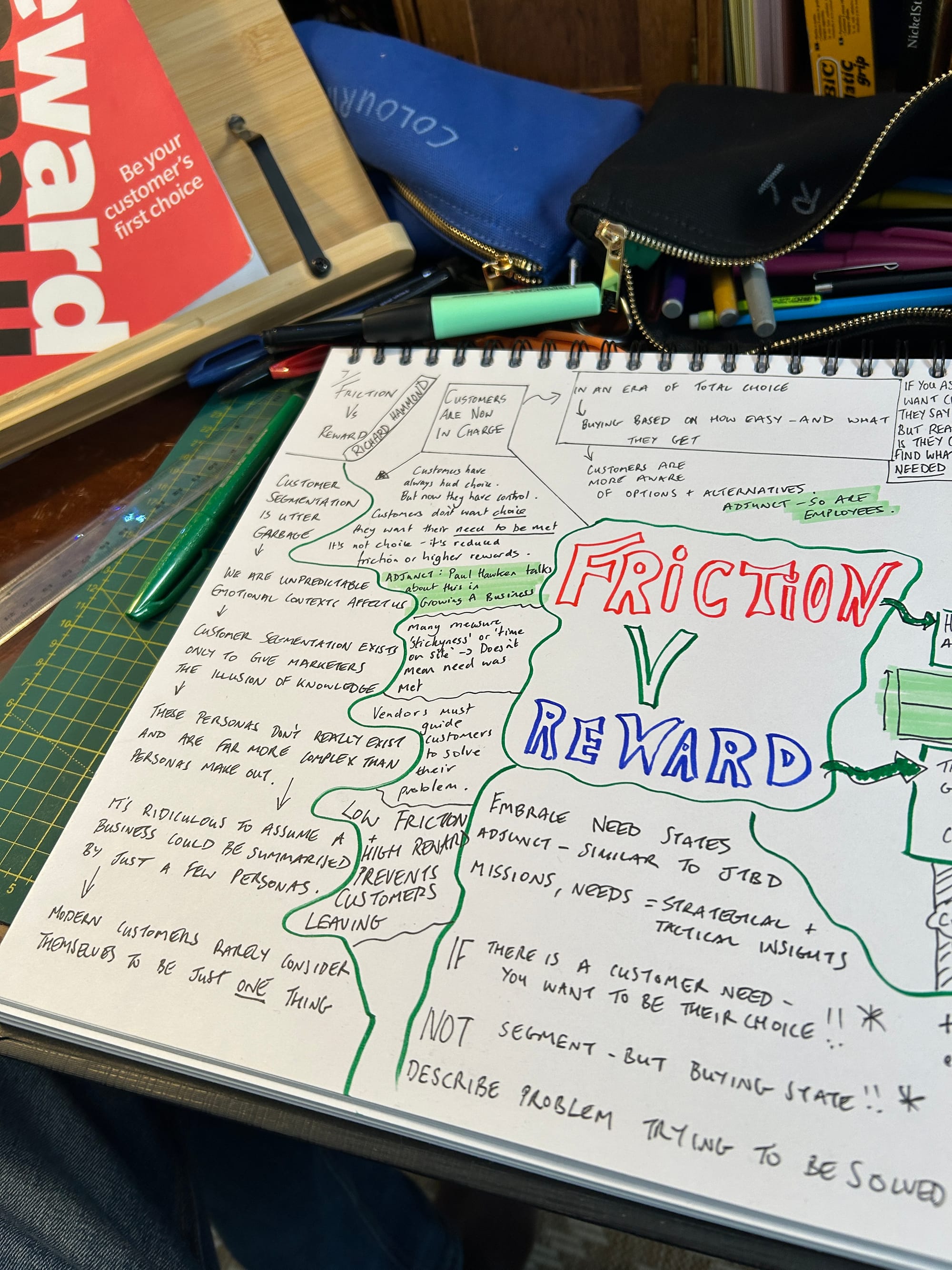
A gallery of my very own learning notes taken from the book.
